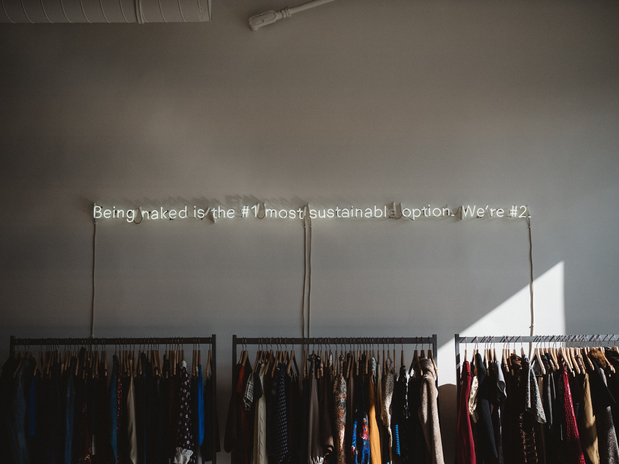As time progresses, more and more new fads come and go. From the chunky sneaker shoe trend to the micro bag trend, fashion is ever-evolving; and fast. But with this, comes overproduction, excessive water use, unfair and unjust working conditions, and the list goes on and on. What areas have we contributed to in the unsustainable fashion world and what can you as an individual do to change your wardrobe into being more eco-friendly and sustainable?
To fully understand the damage the fashion industry causes, you must first understand the normal practices within the fashion world that contribute to the harm in our environment. Brands produce clothes through fashion cycles based on season; manufacturing clothes that vary through climate, geographical location, and what’s currently popular in pop culture. Although this sounds completely suitable at first, the overproduction of clothing contributes to a hefty fraction of the fashion world’s waste. As of right now, 30% of clothes produced are never sold and another 30% of clothes are only bought using discounted prices. Where these clothing items end up is yet another problem as 50% of fast fashion clothing is disposed of within just the first year of purchase. Two problems lie within these statistics, fast fashion and unsustainable textiles.
Fast fashion refers to the inexpensive, rapid production of clothing by mass-market retailers in response to the latest trends. As mentioned, there is a big emphasis on “freshness” within the fashion industry but fashion at the expense of overproducing unsustainable materials has brought more issues than solutions. Fast fashion thrives on non-lasting, harsh materials that are hard to decompose and many who purchase them probably aren’t even aware of the harm they are causing because more than likely, they won’t even be wearing what they are right now months down the road.
The fashion industry alone generates 4% of the world’s waste each year, amounting to 92 million tons of waste. Separate to that, according to a 2017 report, the fashion industry consumes about 79 billion cubic meters of water per year. This combined with the 1.7 billion tons of CO2 emitted per year by the global fashion industry, fashion is one of the highest-ranking wasting and damaging industries in the world.
Related: A Guide to Start Living Sustainably
But how can I be fashionable and sustainable? You may even question: is it even possible for the two to coexist? Don’t be discouraged because they can! Fashion can be ever-evolving but so can you, and here’s how!
First, recycle. If you’re not already recycling plastics, papers, and metals, get with the program. The earth needs our help and the least you can do is make sure to separate your paper and plastics. This could also look like repurposing your old items to minimize the textile waste. Let your inner designer or minimalist come out to play by repurposing old clothing into new pieces or possibly even household items like blankets, rags, etc. Donating is also a great way to discard old clothing without throwing materials away, keep in mind that one man’s trash is another’s treasure!
Related: The Revolution of Clothing: Sustainable Fashion
Especially now with thrifting at an all-time high, though, it is important to remember the true essence of donating. Finding vintage pieces that have come back in season is one of the best feelings ever but sometimes you may find that it doesn’t fit you or it’s not necessarily that look you were going for and decide to sell it. This is totally fine, and I furthermore encourage selling your unwanted clothing to meet your financial needs! But with this new era of thrifting and reselling, has come the gentrification of second-hand stores in which people buy out second-hand stores and resell the pieces they find on their own for an escalated price. Not only is it selfish and greedy, but it also profits off underdeveloped communities that frequent and rely on second-hand stores for their needs. So don’t be a leech, pay for the face value of items and sell them for the same.
And secondly, for goodness sake, stop investing in fast fashion. It’s very much like middle school: cute in the moment but ugly and regretful in the future; so avoid the post-cringe and just save your bucks on sustainable, life-long items. Don’t go through middle school twice, babes. It wasn’t pretty the first time around so it most definitely won’t be the second time. Here are some brands that are stylish and give love to our planet.



